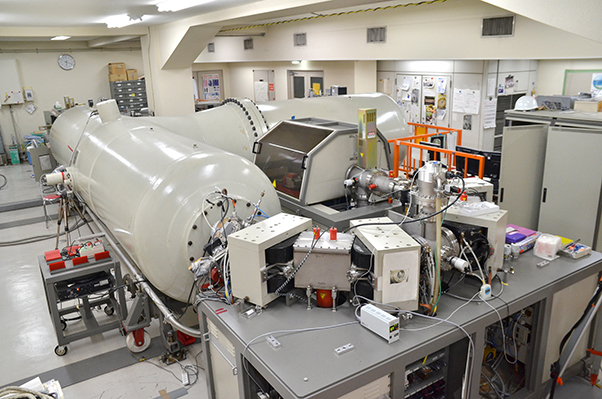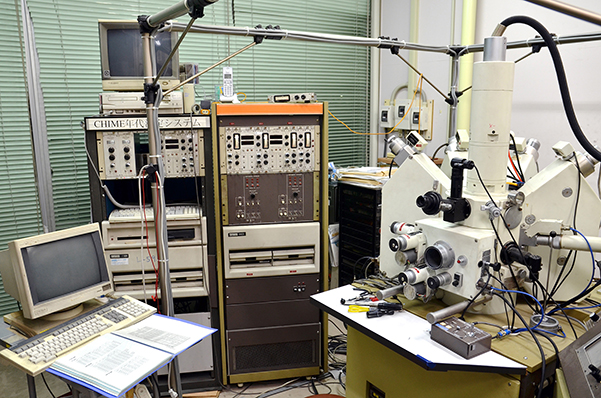Division for Chronological Research
Near future forecasts of global environmental change and its countermeasures are pressing challenges faced by the entire human race. In order to simulate environmental change in the near future, boundary conditions that are the starting points have a definite significance, and it is imperative to determine these through the analysis of environmental events in the past. Therefore, capturing the time change of past events, i.e. dating, has an important implication here.
The Chronological Research Department uses the tandetron accelerator mass spectrometer and the chemical U-Th total Pb isochron method (CHIME) to conduct research that considers every event of the Earth’s history, spanning 4.6 billion years, from research on archaeological specimens and cultural heritage to modern cultural relics, by taking the “time axis” as the keyword. Conducting age measurements for such a broad time axis, and promoting extensive interdisciplinary sharing and collaborative research are features of the Institute for Space-Earth Environmental Research and the Chronological Research Department. Furthermore, with the aim of nurturing the next generation of researchers, we participate in collaborative courses in “Earth History” at the Graduate School of Environmental Studies and Department of Earth and Environmental Sciences, Nagoya University, as well conduct various awareness programs related to chronology and age measurement. We also contribute to lectures and practical training at the Department of Earth and Planetary Sciences, School of Sciences, Nagoya University.
Through this research that uses the Tandetron Accelerator Mass Spectrometer, we plan to study global environmental changes in the past (from approximately 60,000 years), to the present day, and also the cultural history of the human race, by using the carbon-14 (14C) dating method, and to promote the development of a new chronological measurement technique that uses a radionuclide with longer half-life, such as Beryllium-10 (10Be). Furthermore, we are also making progress in research that analyzes active faults and volcanic activity cycles by using much more detailed chronological measurements, and also research related to near future forecasts of global environmental change based on the analysis of space-time changes in radiocarbon 14C concentrations.
The CHIME is a new dating method with a high spatial resolution. It uses an electron probe micro analyzer (EPMA), and was developed and put to practical use for the first time in the world by the Center for Chronological Research, Nagoya University–this is the predecessor organization of the Chronological Research Department. Currently this technique is widely used across the world on various rock samples for conducting detailed research on the long history of the Earth, from millions of years ago to the time of the formation of the Earth.




